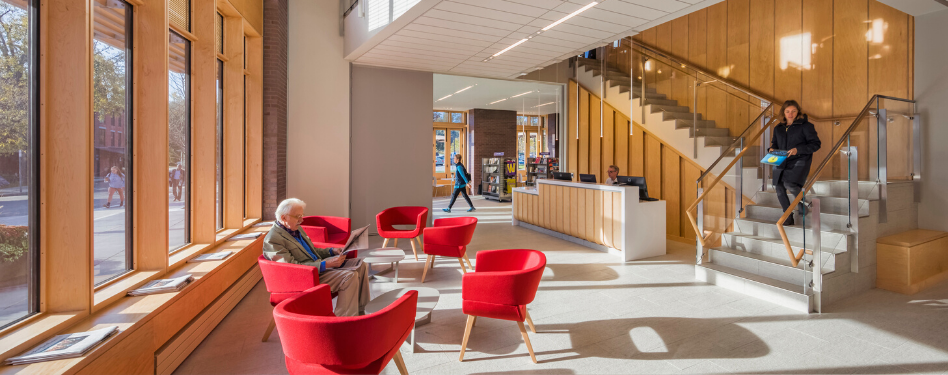
The long-term realities of COVID-19 have begun to set in and the associated environmental implications of reopening have evolved from urgent concerns to hopeful opportunities.
This newfound positive outlook is largely due to the energetic momentum of the sustainability profession and the movement to #BuildBackBetter. Real estate developers, designers, architects, and building operators are working tirelessly to reopen with the assurance of occupant health and safety and the sustainability industry has identified strategies to integrate sustainability into these healthy reopening efforts.
As a sustainability consultant, I continue to collaborate diligently with real estate owners, building operators, designers and architects in the effort to #BuildBackBetter, but am often asked how to validate and communicate the efforts to reopen safely and sustainably. This concern seems to be common across many industries, including commercial and residential real estate, sports and live event venues, and even in industrial spaces. It seems that most organizations are looking for the ‘rule-maker’ or the ‘best practice-setter’ and right now, the national guidelines are too generic to help set a precedent on their own. Many clients are struggling to find the guidelines for the specific applicability of how to reopen their spaces safely.
This gap in regulation of how the buildings can effectively move forward has begun to be filled by third-party green building standards, such as USGBC, IWBI, and others. In recent years, the green building movement has incorporated the necessary healthy building standards to appropriately respond to COVID-19, so it is only natural that the industry release additional standards to address the short-term public health crisis that will tie in to longer-term operational resiliency strategies.
Though the technology and strategies are only enhanced versions of previous recommendations, these new programs, such as Arc Re-Entry, are still new to the market and new to clients.
As my organization, Recipric, supports clients in utilizing the Arc Re-Entry Toolkit, I have experienced some lessons learned for other Arc Re-Entry users:
- Balance upgraded health and safety policies with environmental sustainability standards
In the scramble to reopen quickly, policies for waste reduction, energy use reduction, and even water use reduction may be sacrificed. Environmental risks included increased packaging, increased paper towel and single-use plastic use, and even an increase in disposal of janitorial products. It is critical to ensure that the HVAC system can adjust to the new filtration standards and are still working efficiently. Janitorial staff will be cleaning more often and using much more water. Water reuse policies and limits on water runtime may be helpful guidance to ensure potable water use reduction.
-
Harsher cleaning chemicals are not more effective against COVID-19.
Pulling back the green cleaning policy, even temporarily, has been a common occurrence in the rush to reopen ‘safely.’ However, the notion that green cleaning products are not effective against COVID-19 is a falsehood. Organizations that make this decision risk this ‘temporary’ adjustment to become the mainstay, which is harmful to janitorial staff, building occupants, and the environment. Make sure that these potentially harmful decisions are well-informed and integrated into the basic reopening policies.
-
In multi-tenant buildings, the Occupant Experience Surveys may be clouded between efforts by the landlord and efforts by the tenant. As the interpreter of one or the other, try to make this distinction if the feedback will support additional changes.
Though it seems obvious to built environment professionals, the nuances between building ownership and the tenant are often lost on the occupants that will be completing the Occupant Experience Surveys. To combat biased responses to this survey, Building Ownership and Tenants should coordinate communication strategies with all occupants to reduce confusion between efforts. This may include streamlining signage and disease transmission guidelines, hosting shared webinars, and actively communicating on effective disease transmission mitigation strategies.
-
Air quality assessments can only be done when the building is occupied.
Building owners want to check as many boxes off as quickly as possible to ensure that tenants feel comfortable to return to their spaces. A large component of Arc Re-Entry and other healthy building validation tools is to perform air quality testing on the space. Though it may seem ideal to get this done quickly, the tests will not provide accurate readings unless the building is occupied. If tenants are slow to return to the space, this component of the healthy building evaluation will not be accurate until people are physically occupying the space.
-
Leverage the power of Arc Re-Entry’s analysis to communicate to tenants that the building is in the best condition possible.
Arc Re-Entry and other tools are not built to be a one-stop-shop stamp of approval of a ‘healthy building,’ but are helpful in guiding the necessary operational changes to ensure user confidence. Without full information on the intent of the Arc Re-Entry Toolkit or the Comprehensiveness Score, someone may misinterpret the meaning of the score. To nip this confusion, the Arc Re-Entry users should leverage the strategies that were used to complete the analysis, instead of leveraging the analysis itself. For example, tenants may be interested in the upgraded HVAC filter type and effectiveness. Signage and digital communication to example the intent behind this upgrade will prove much more powerful than simply communicating the Arc Re-Entry Completeness score.
Kristen Fulmer, Founder of Recipric, is a sustainability expert, focused on maximizing performance and promoting occupant health and wellbeing within the built environment. At Recipric, she applies this passion to the sports industry, integrating holistic sustainability strategy into sports organizations and their brand partners to ensure measurable, impactful positive impact.

